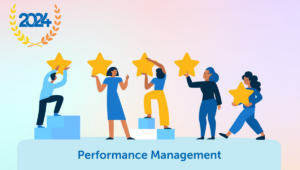A recent Wall Street Journal article put Google’s diversity struggles on full display: Googlers of all ideologies and political leanings are finding it difficult to reconcile their personal beliefs with those of their colleagues.
Googlers For Animals are clashing with Black Googler Network. Conservatives At Google say their preferred candidates get unfairly smeared at work. And Sex-positive Googlers take issue with Google Drive staff removing explicit images from the platform.
Google grapples with this kind of infighting in part because Google encourages people to bring their full selves to work. The policy may be noble on its face, but as our client work has found, complete inclusivity often leads to clashes over conflicting viewpoints. Everyone is saying something different, so no one is getting heard.
The solution we propose for optimizing inclusion is developing a shared language.
The psychology of inclusion
We know from the research that diversity makes inclusion harder — no matter if you’re talking about gender, ethnicity, or belief. Teams with more differences must exert greater effort to help others feel like they belong.
Too often, well-intentioned companies start groups to celebrate these differences, such as those focused on women or minority ethnic groups. Studies have shown this only makes things worse. One 2015 review found that efforts to celebrate differences can lead non-dominant members to feel uncomfortably aware of their group identities. They feel more marginalized, not less.
The way to make people feel more in-group is to celebrate similarities. Colleagues feel like they belong when they are reminded of what everyone has in common, such as a shared sales target or project objective. Psychologists call these “superordinate goals,” and they’ve been shown to improve cohesion and reduce conflict.
This is where shared language comes in. If coworkers are united around similar goals, they can begin to adopt specific vocabularies for talking about those goals. By using similar phrases, they can ensure mutual understanding.
Shared language must be brain-friendly
Unfortunately, typical D&I mantras are too exhaustive to add any real value for companies. In our own work, we rely on the science of memory to help clients build a handful of short, sticky phrases that are easy to recall and share in daily conversation.
The phrases have the added benefit of getting people to automatically think in terms of the team’s goals — a process known as “unconscious priming.” In matters of bias, for example, having a shared language equips people to call out biases in real-time. If someone notices a coworker hiring only people of their same gender, race, and age, they can ask the person if there might be a similarity bias at play.
Asking questions and using the same language allows teams to broach big issues in a non-threatening way.
Tips for your organization
- To get the most out of shared language, explain your thinking to create clarity. People won’t always agree with decisions, but at least they’ll understand and respect them.
- Tell stories to pass on cultural cues about ideal behaviors and show how inclusion can get misunderstood. Generating empathy helps align people to the company’s goals, without telling people to sacrifice who they are as a person when coming to work.




